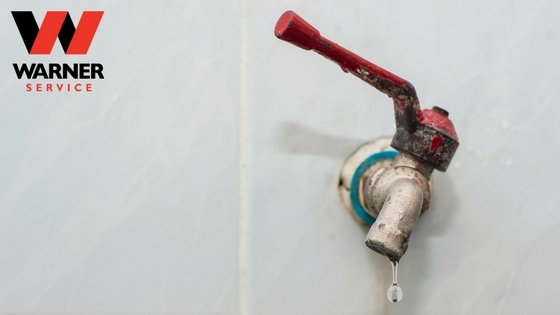
Warner Service has offered a variety of solutions to familiar plumbing problems, but which is easiest for the average homeowner? What about if you have a better understanding of your home’s plumbing?
The pipes burst.
Easy: Stop water from flowing out of the hole by closing the main shutoff valve, then call your local technicians.
Hard: Turn on the cold-water taps to quickly drain the pipes from trapped water and steam.
Easy: Close the main shutoff valve before the frozen pipe splits. Turn on a faucet and keep the water running at a constant slow drip while calling the experts.
Hard: Apply heat to only the section of the pipe that’s frozen by using an electric heating pad, hair dryer, portable space heater, or warm water-soaked towels. Apply this heat until water pressure has been fully restored.
Warning: Don't use any device that has an open flame or chemically flammable properties to thaw a frozen pipe.
The washing machine is dying.
Easy: If the washing machine is on the fritz, dial an expert for a maintenance check-up and immediate solution.
Hard: In the long run, do smaller loads of laundry, and move the washer a few inches away from the wall to prevent the hose from kinking.
A fixture's leaking.
Easy: Find the shutoff valve that’s specific to the leaky fixture. Check the fixture’s tap for debris, hair, soap scum, and food particles then remove the obstruction.
Hard: Follow our quick 8-step guide to fixing a leak on your own, though we highly suggest you call the pros to handle the rest.
The water heater is failing.
Easy: If you don’t have hot water, contact a professional for the easiest solution.
Hard: If you know that the electric water heater is failing due to an obstruction, turn off its power via the circuit breaker. If you have a gas-powered water heater, turn off the valve on the gas supply line that runs to the tank. Next, follow these instructions:
- Attach a garden hose to the small drain valve on the bottom of the tank.
- Run it to the outside to remove sump.
- Shut off the cold water supply to the heater.
- Open the drain valve and hot water faucet to help drain the system.
- Shut off the hot water faucet after it's done draining.
- Turn on the cold water supply to the heater, and let the water flush out of the tank.
- Shut the drain valve when the water becomes clear.
- Disconnect the garden hose to allow the tank to fully fill up again.
- Turn on the electricity or gas.
If you have a tankless water heater, it’s about the relief valve. Follow step-by-step cleaning instructions in Water Heater Maintenance 101.
The toilet’s clogged.
Easy: Grab a plunger or drain snake. If you’re not sure how to use the latter, check out How to Clear a Drain Using a Drain Snake, or call a professional.
Hard: Use a concoction of baking soda, vinegar, and hot water or other organic drainage products.
You smell gas.
Easy: If you smell gas, evacuate your home immediately. Gas leaks are not do-it-yourself projects due to its toxic nature. Once you’re in a safe area outside, call a plumber or gas company for this emergency situation.
The water pressure is weak.
Easy: If the shower’s water pressure is weak, call a maintenance expert to check your home’s water tank.
Hard: Clean the showerhead by removing it from the hose and soaking it in an organic descaling solution.
From the kitchen to the bathroom, a number of plumbing problems can occur in your home. It’s important that homeowners can differentiate which are fixable by DIYers and when you should call the experts.
For more information on how to prevent plumbing problems, download Warner Service’s Plumbing Maintenance Checklist:


